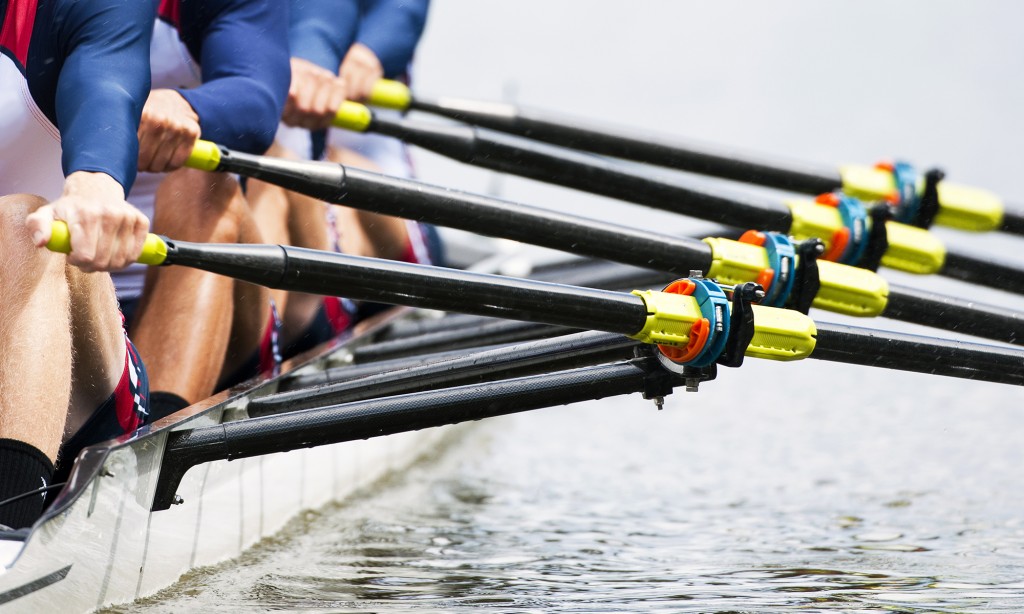
What Lean Teams Can Learn from Crew
I was working on a conference presentation the other day and found a picture of a crew team. It reminded me of a similar picture our marketing team has used on the Planview AgilePlace website, and how well that metaphor fits both Lean and me personally. I was in crew in high school. I still have my team jacket in my closet 20 years later. That may be corny nostalgia, but it speaks to the impact of the experience.
I rowed in quads. Quads are the boats where each rower faces backwards, with an oar in each hand, and there’s a coxswain in the back of the boat facing forward to guide the crew. It’s a wonderful metaphor for successful Lean teamwork.
Discipline, Cadence, Flow, Teamwork
First, the boat itself is stripped to the essentials of what’s required for its racing purpose. A crew shell is the essence of form optimized for function — speed. And yet, it’s a beautiful thing.
None of the individual members of the team can go any faster through personal heroics. They are all, literally, in the same boat. The speed of the boat is determined by how well they harmonize, pulling together to synchronize their individual efforts into a smoothly flowing effort.
If they fail to work together, the boat can be pulled in the wrong direction. It loses speed through wasted effort. It pitches and rolls. In the worst cases, oars get entangled, and the boat can flip over.
Victory in a race is built on relentless preparation. You aren’t making things up as you go along. The team is operating on muscle memory born of practice. Each rower has trained him or herself as a skilled individual contributor, or else they will drag down the team. The boat can only go as fast as the slowest rower. And they have practiced with their crew to build an effortless cadence.
The rowers don’t worry about where the boat is headed during the race. They understand the goal, but they are focused on their task while leaving the steering to the coxswain.
Lightweight and Mentoring Leadership
Teams select coxswains who are as light as possible. Their role is important, but it has a cost. They are weight that doesn’t provide power. Steering is necessary, but ideally they steer as little as possible because steering is also drag. It slows the boat, just a tiny bit if done correctly, but it still has a cost.
The coxswain may call on the rowers to sprint at times to gain position. But they can’t do it too much. Victory mostly comes from smooth, sustainable power. A great coxswain provides the most value by providing the team with situational awareness and encouragement.
Once back on shore, the coxswain can provide insight about where there is room for improvement. Some of that insight is a conversation with the team. Some is with the coach.
Unlike other sports, a crew coach really has no power to affect the results of the race in progress. There are no plays to be called or substitutions to be made. But coaches are hugely influential in the long-term success of the team: selecting rowers and coxswains, training them, ensuring they have the right gear, encouraging them towards victory and consoling them in defeat.
There is a magic to winning in this kind of contest. To feel proud of your individual effort and accomplishment but even more to the connection you have with your crew as a victorious team.
Discipline. Cadence. Flow. Teamwork. Lightweight and mentoring leadership.
Like I said, a wonderful metaphor for the new Lean.

![A Global Collaborative Work Management Blueprint [Video]](https://blog.planview.com/wp-content/uploads/2019/07/A-Global-Collaborative-Work-management-blueprint.png)


